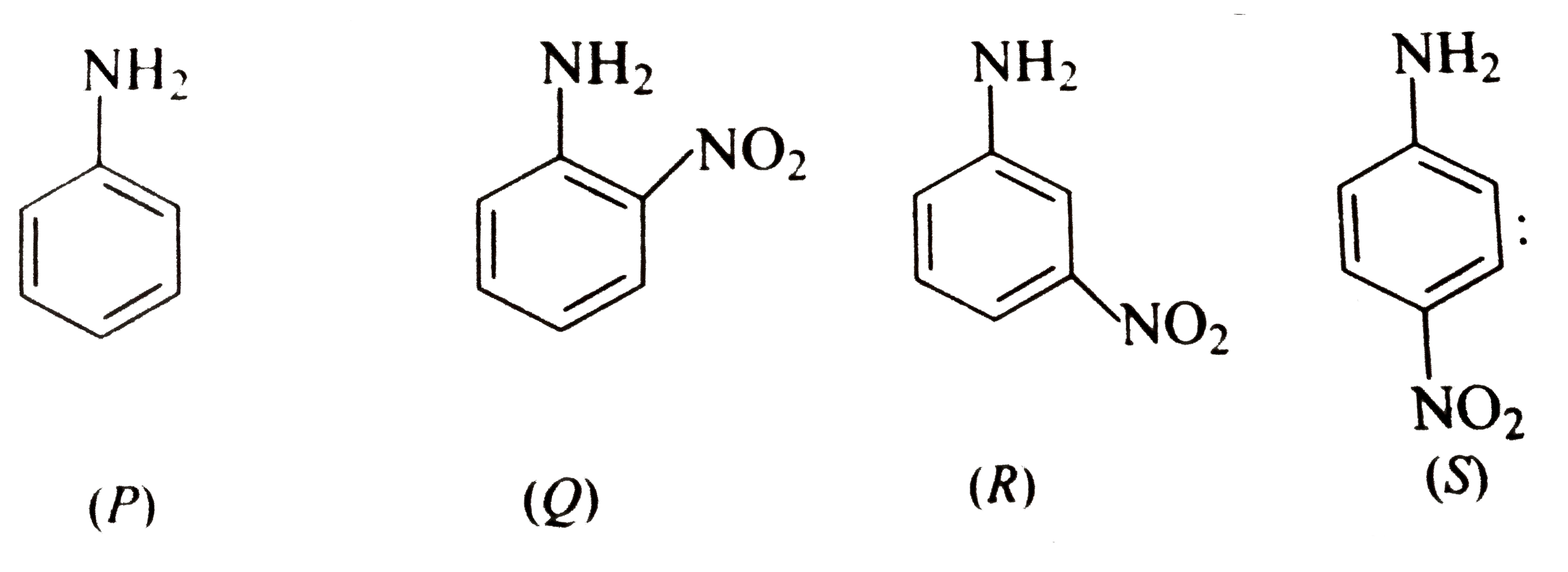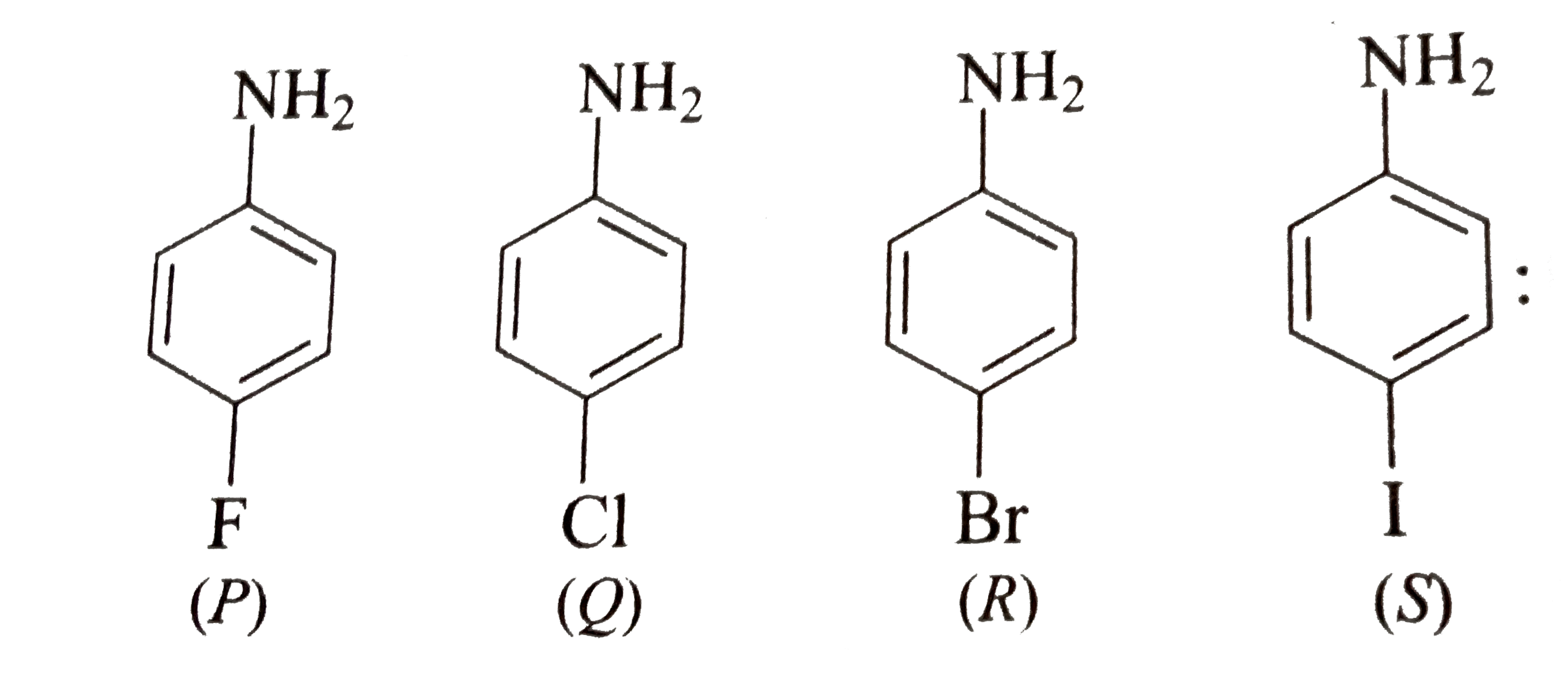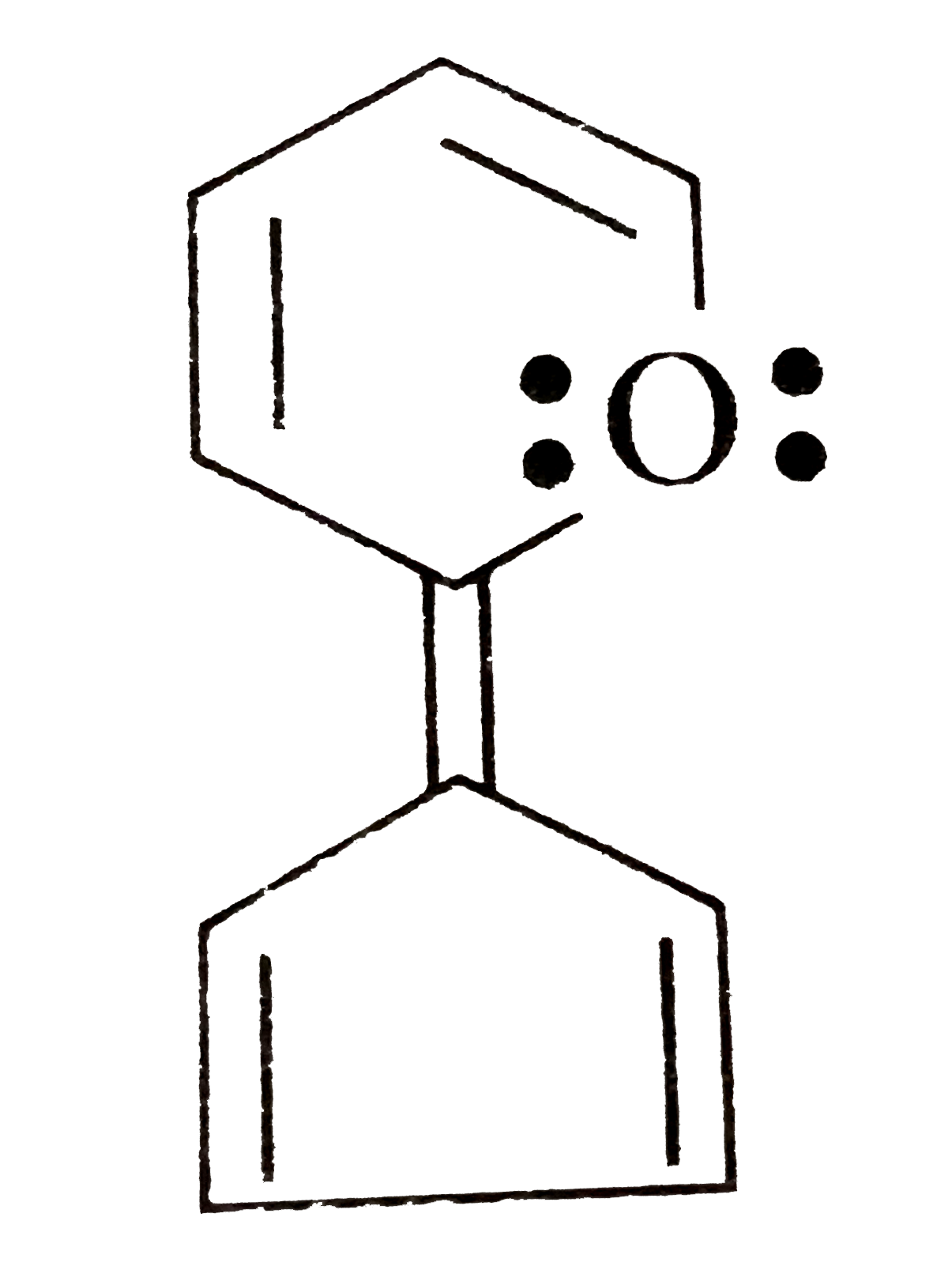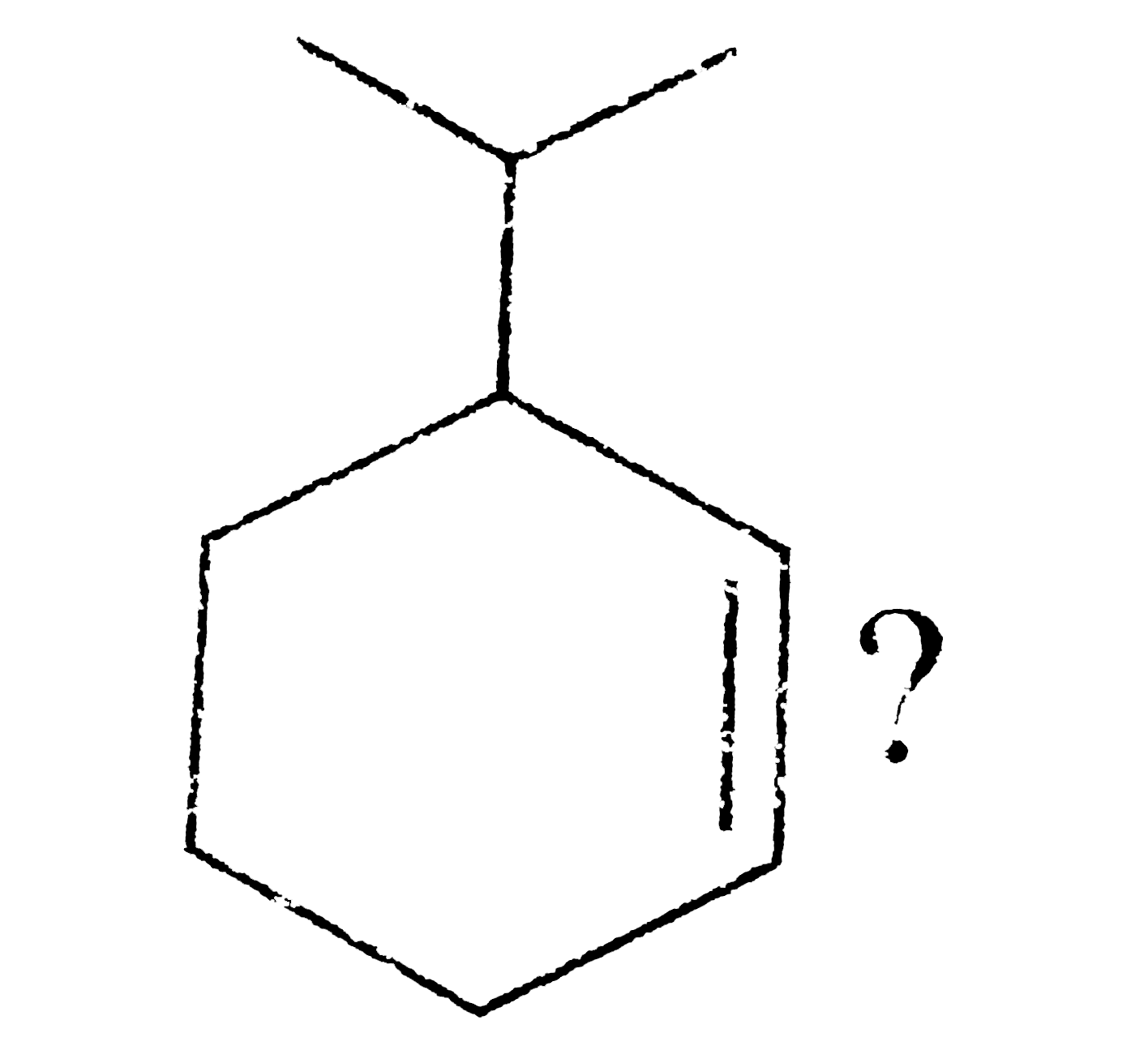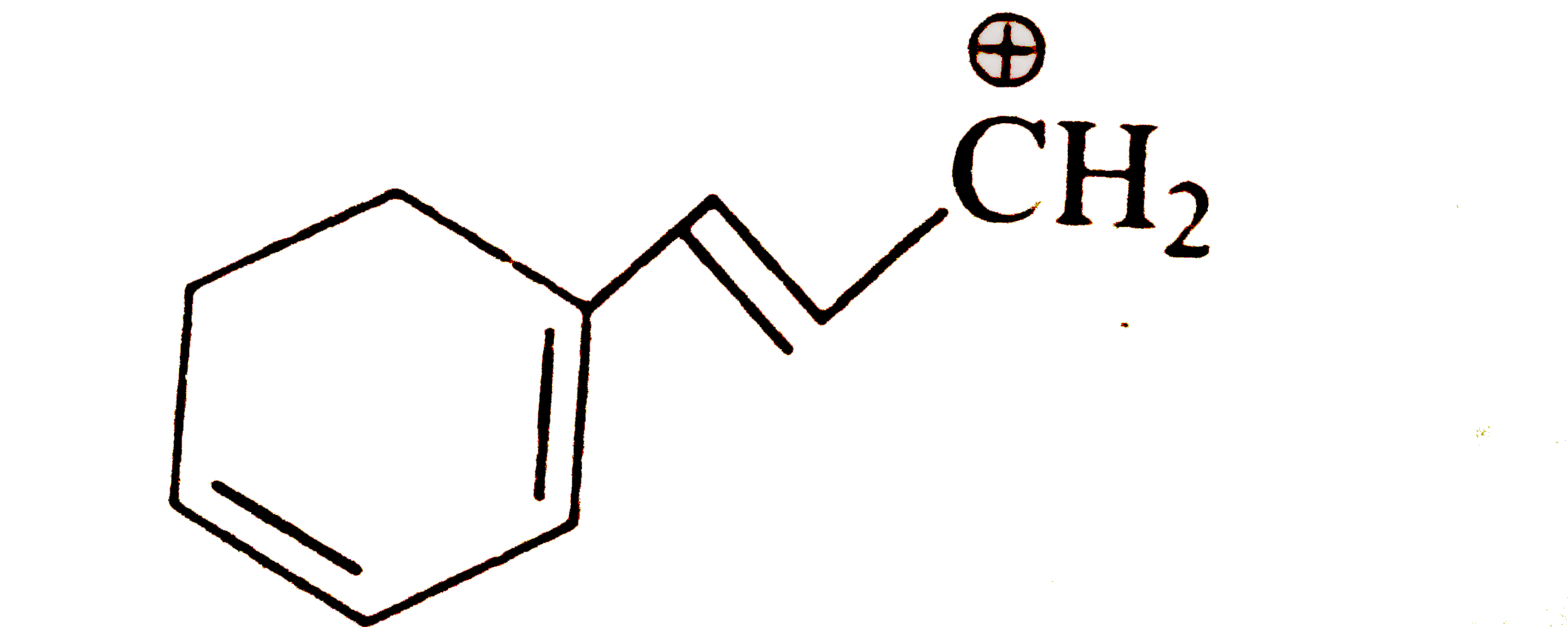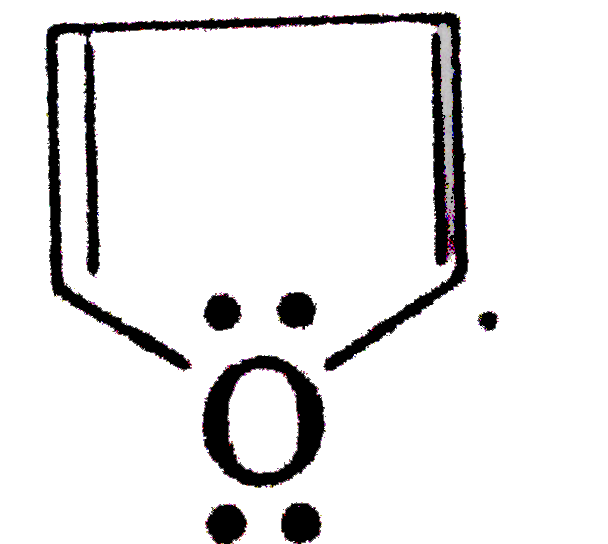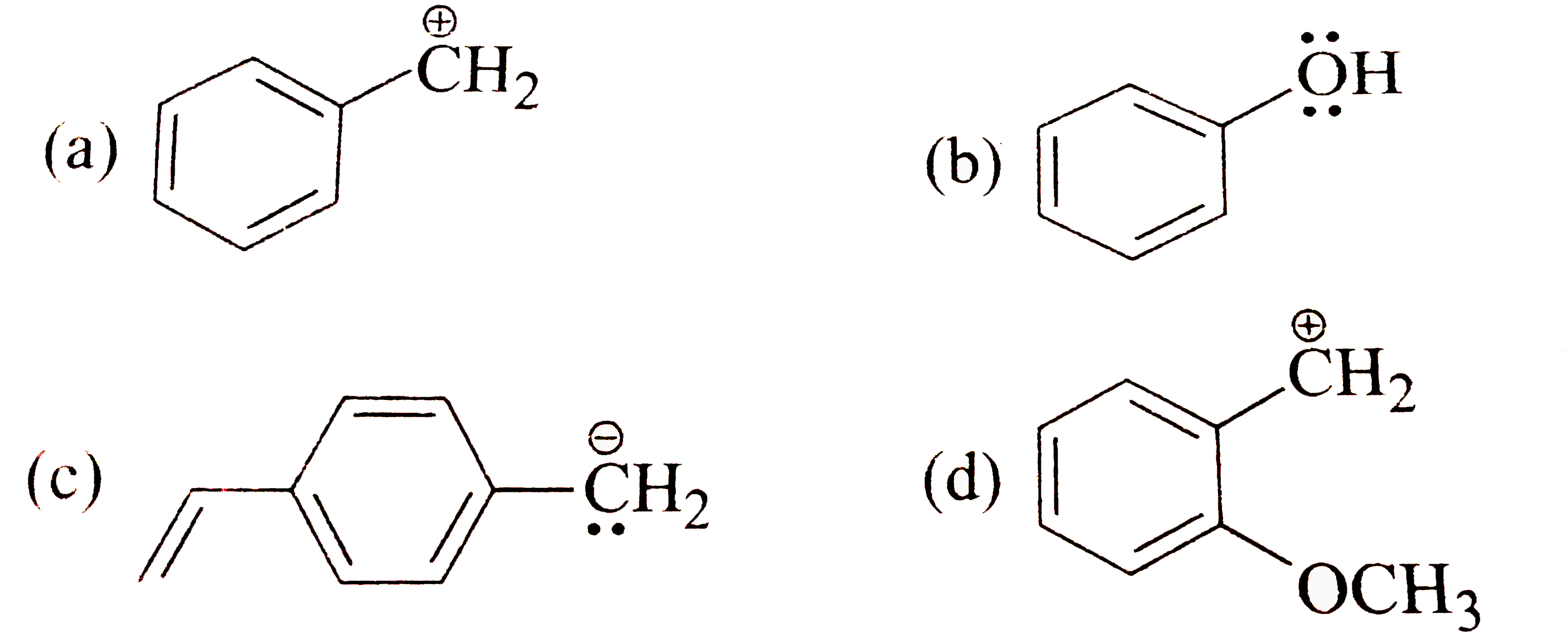More Than One Correct (Q.26 To Q.50) from GR BATHLA & SONS CHEMISTRY (HINGLISH) GENERAL ORGANIC CHEMISTRY for Class 12
| Class 12 | CHEMISTRY |
| Chapter | GENERAL ORGANIC CHEMISTRY |
| GR BATHLA & SONS CHEMISTRY (HINGLISH) | More Than One Correct (Q.26 To Q.50) |
| Medium | English |
| Academic Year | 2023-2024 |
Question 310
Electron deficient species are known as electrophiles. All positviely changed species are not electronphilic. Covalent compound having complete octer but if central atom has unfilled d-orbital also act as electrophiles. All electrophiles are not always Lewis acid.
Which of the following is not electrophile View SolutionQuestion 311
Electron deficient species are known as electrophiles. All positviely changed species are not electronphilic. Covalent compound having complete octer but if central atom has unfilled d-orbital also act as electrophiles. All electrophiles are not always Lewis acid
Which of the following electrophile is not Lewis acid?View SolutionQuestion 312
Electron deficient species are known as electrophiles. All positviely changed species are not electronphilic. Covalent compound having complete octer but if central atom has unfilled d-orbital also act as electrophiles. All electrophiles are not always Lewis acid
Which of the following is electrophilic in nature? View SolutionQuestion 313
When (C−H)σ electrons are in conjugation to pi bond this conjugation is known as hyperconjugation. For any compound to show hyperconjugation :
(i) Compound should have one sp2−hybrsed carbon.
(ii) α−carbon with respect to sp2 should be sp3
(iii) α−corbon should contain at least one hydrogen atom.
Which of following cations is hyperconjugation destabilized? View SolutionQuestion 314
When (C−H)σ electrons are in conjugation to pi bond this conjugation is known as hyperconjugation. For any compound to show hyperconjugation :
(i) Compound should have one sp2−hybrsed carbon.
(ii) α−carbon with respect to sp2 should be sp3
(iii) α−corbon should contain at least one hydrogen atom.
Which of following alkenes is most stabilized?View SolutionQuestion 315
When (C−H)σ electrons are in conjugation to pi bond this conjugation is known as hyperconjugation. For any compound to show hyperconjugation :
(i) Compound should have one sp2−hybrsed carbon.
(ii) α−carbon with respect to sp2 should be sp3
(iii) α−corbon should contain at least one hydrogen atom.
Which of following alkyl benzene has maximum electron density? View SolutionQuestion 316
In an aromatic ring, a functional group with lone pair of electron exerts +M effect, some fnuctional groups like, −NO,−NC−CH=CH2 etc., can function both as electron donating (+M) or electron withdrawing (-M) groups. More extended conjugation provide more stabilization.
The most stable carbocation is :View SolutionQuestion 317
In an aromatic ring, a functional group with lone pair of electron exerts +M effect, some fnuctional groups like, −NO,−NC−CH=CH2 etc., can function both as electron donating (+M) or electron withdrawing (-M) groups. More extended conjugation provide more stabilization.
The most stable resonating structure of compound isView Solution
isView SolutionQuestion 318
In an aromatic ring, a functional group with lone pair of electron exerts +M effect, some fnuctional groups like, −NO,−NC−CH=CH2 etc., can function both as electron donating (+M) or electron withdrawing (-M) groups. More extended conjugation provide more stabilization.
The most stable resonating structure is :View SolutionQuestion 319
The process whereby a hydrogen atom attached to the α−carbon of carbonyl compound moves to the carbonyl oxygen atom is known as enolization or keto-enol tautomerism. Isomeric carbonyl and enol structure are tautomers.
 ltbgt Normally, the carbonyl form is favoured but structure factor marked affect KT.
ltbgt Normally, the carbonyl form is favoured but structure factor marked affect KT.
Which of the following compounds will not exhibit enozation? View SolutionQuestion 320
The process whereby a hydrogen atom attached to the α−carbon of carbonyl compound moves to the carbonyl oxygen atom is known as enolization or keto-enol tautomerism. Isomeric carbonyl and enol structure are tautomers.
 ltbgt Normally, the carbonyl form is favoured but structure factor marked affect KT.
ltbgt Normally, the carbonyl form is favoured but structure factor marked affect KT.
Arrange the following compounds in decreasing order of KT : View Solution
View SolutionQuestion 321
The process whereby a hydrogen atom attached to the α−carbon of carbonyl compound moves to the carbonyl oxygen atom is known as enolization or keto-enol tautomerism. Isomeric carbonyl and enol structure are tautomers.
 ltbgt Normally, the carbonyl form is favoured but structure factor marked affect KT.
ltbgt Normally, the carbonyl form is favoured but structure factor marked affect KT.
Which of the following has least value of KT? View SolutionQuestion 323
Under common reaction conditions, a carboncation rearranges to another carbocation of equal or greater stability. For example secondary carbocation will rearrange to a tertiary carbocation. It will not rearrange to a less stable primary carbocation. This generalization is not absolute, and because there is not is a high energy barrier to the rearrangement of carbocations, rearrangement to a less stable cation can occur if it offers the chance to forme a more stable product.
In which of the following cations rearrangement takes place most rapidly?View SolutionQuestion 324
Under common reaction conditions, a carboncation rearranges to another carbocation of equal or greater stability. For example secondary carbocation will rearrange to a tertiary carbocation. It will not rearrange to a less stable primary carbocation. This generalization is not absolute, and because there is not is a high energy barrier to the rearrangement of carbocations, rearrangement to a less stable cation can occur if it offers the chance to forme a more stable product.
In the following cation , H/CH3 that is most likely to migarte to the positively charged carbon is :
H3C1−2H∣C∣OH−3⊕C∣H−4H∣C∣CH3−5CH3View SolutionQuestion 325
Type of anios in which delocatisation of negative charge occrur on more electronegative atom are highly stabilized. If negative charge deloclisation occur on same element then stability is decided by number of resonaating sturcture. Cyclic anions which are aromatic are highly stabilized but if cyclic anions are antiaromatic, they are highly destabise due to presence of unpaired electrons in antibonding molecular orbital.
Which of the following anions is highly stabilized?View SolutionQuestion 326
Type of anios in which delocatisation of negative charge occrur on more electronegative atom are highly stabilized. If negative charge deloclisation occur on same element then stability is decided by number of resonaating sturcture. Cyclic anions which are aromatic are highly stabilized but if cyclic anions are antiaromatic, they are highly destabise due to presence of unpaired electrons in antibonding molecular orbital.
Which of the following anions is most destabilized?View SolutionQuestion 327
Type of anios in which delocatisation of negative charge occrur on more electronegative atom are highly stabilized. If negative charge deloclisation occur on same element then stability is decided by number of resonaating sturcture. Cyclic anions which are aromatic are highly stabilized but if cyclic anions are antiaromatic, they are highly destabise due to presence of unpaired electrons in antibonding molecular orbital
Find out most stable anion among following anions : View SolutionQuestion 328
In a substance that are resonance hybirds, the measured length of given bond usually differs form that predicted form any one of the contributing sturctures. Chloroethylene is found by measurement to have a C−Cl distance of 1.69A. This is shorter than C−Cl bond in such compounds a methly chloride (1.77A), an indication that in chloroethylene C−Cl bond has some double bond character.

Which of the following has shortest C-Cl bond?View SolutionQuestion 329
In a substance that are resonance hybirds, the measured length of given bond usually differs form that predicted form any one of the contributing sturctures. Chloroethylene is found by measurement to have a C−Cl distance of 1.69A. This is shorter than C−Cl bond in such compounds a methly chloride (1.77A), an indication that in chloroethylene C−Cl bond has some double bond character.

Arrange the following in decreasing order of C−N bond length :
 View Solution
View SolutionQuestion 330
In a substance that are resonance hybirds, the measured length of given bond usually differs form that predicted form any one of the contributing sturctures. Chloroethylene is found by measurement to have a C−Cl distance of 1.69A. This is shorter than C−Cl bond in such compounds a methly chloride (1.77A), an indication that in chloroethylene C−Cl bond has some double bond character.

Arrange following in increasing order of C−N bond length : View Solution
View SolutionQuestion 331
Basicity is defined by equilibrium constant for abstracting a proton. Nucleophilicity is defined by rate of attack on an electrophilic carbon atom,

A species with a negative charge is stronger nucleophile than similar neutral species.Nucleophilicity decreases form left to right in periodic table and increases down the group in periodic table. As the size of similar type of negatively charged species increases, basicity increases and nuleophilicity decreases.
Which of the following is incorrect order of nucleophilicity?View SolutionQuestion 332
Basicity is defined by equilibrium constant for abstracting a proton. Nucleophilicity is defined by rate of attack on an electrophilic carbon atom,

A species with a negative charge is stronger nucleophile than similar neutral species.Nucleophilicity decreases form left to right in periodic table and increases down the group in periodic table. As the size of similar type of negatively charged species increases, basicity increases and nuleophilicity decreases.
Which of the following negatively charged species has maximum basic character?View SolutionQuestion 333
Basicity is defined by equilibrium constant for abstracting a proton. Nucleophilicity is defined by rate of attack on an electrophilic carbon atom,

A species with a negative charge is stronger nucleophile than similar neutral species.Nucleophilicity decreases form left to right in periodic table and increases down the group in periodic table. As the size of similar type of negatively charged species increases, basicity increases and nuleophilicity decreases.
Among the given pairs, in which first has lower nucleophilic character?View SolutionQuestion 334
Benzoic acid is more acidic than acetic acid, fomic acid is more acidic than benzoic acid, among monsoubstituted benzoic acid derivative, the ortho derivative is more acidic than meta and para substiued acid due to ortho effect. Acidity of an acid can be explained base of which compound will be most stable?
Conjugated base of which compound will be most stable? View SolutionQuestion 335
Benzoic acid is more acidic than acetic acid, fomic acid is more acidic than benzoic acid, among monsoubstituted benzoic acid derivative, the ortho derivative is more acidic than meta and para substiued acid due to ortho effect. Acidity of an acid can be explained base of which compound will be most stable?
Which one the following is most acidic?View SolutionQuestion 336
Benzoic acid is more acidic than acetic acid, fomic acid is more acidic than benzoic acid, among monsoubstituted benzoic acid derivative, the ortho derivative is more acidic than meta and para substiued acid due to ortho effect. Acidity of an acid can be explained base of which compound will be most stable?
Compare acidic strength of the following :
 View Solution
View SolutionQuestion 360
Explain each statement using resonance theory.
(a) The indicated C−H bond in propene is more acidic than the indicated C−H bond in propane.

(b) The bond dissociation energy for the C−C bond in ethane is much higher than the bond dissociation energy for the indicated C−C bond in 1-butene.
 View Solution
View SolutionQuestion 366
Hydrocarbons A and B both possess a significant dipolel, even though each is composed of only C−C and C−H bonds. Explain why the dipole arises in each compound. Use resonance structures to illustrate the direction of the dipole. Which ring is more electron rich in each compound?
 View Solution
View Solution
All Exercises from GR BATHLA & SONS CHEMISTRY (HINGLISH) Class 12 CHEMISTRY GENERAL ORGANIC CHEMISTRY
- EXERCISE-1 LEVEL-1
- EXERCISE-1 LEVEL-2
- INTEGER ANSWER TYPE PROBLEMS
- LEVEL 1 (Q.1 TO Q.25)
- LEVEL 1 (Q.26 TO Q.49)
- LEVEL 2 (Q.1 TO Q.25)
- LEVEL 2 (Q.101 TO Q.125)
- LEVEL 2 (Q.126 TO Q.150)
- LEVEL 2 (Q.151 TO Q.175)
- LEVEL 2 (Q.176 TO Q.200)
- LEVEL 2 (Q.201 TO Q.205)
- LEVEL 2 (Q.26 TO Q.50)
- LEVEL 2 (Q.51 TO Q.75)
- LEVEL 2 (Q.76 TO Q.100)
- LINKED COMPREHENSION TYPE (Q.1 TO Q.25)
- LINKED COMPREHENSION TYPE (Q.26 TO Q.27)
- MATCH THE COLUMN
- MORE THAN ONE CORRECT (Q.1 TO Q.25)
- MORE THAN ONE CORRECT (Q.26 TO Q.50)
- MORE THAN ONE CORRECT (Q.51 TO Q.55)
- SUBJECTIVE TYPE PROBLEMS
- EXERCISE-1 LEVEL-1
- EXERCISE-1 LEVEL-2
- INTEGER ANSWER TYPE PROBLEMS
- LEVEL 1 (Q.1 TO Q.25)
- LEVEL 1 (Q.26 TO Q.49)
- LEVEL 2 (Q.1 TO Q.25)
- LEVEL 2 (Q.101 TO Q.125)
- LEVEL 2 (Q.126 TO Q.150)
- LEVEL 2 (Q.151 TO Q.175)
- LEVEL 2 (Q.176 TO Q.200)
- LEVEL 2 (Q.201 TO Q.205)
- LEVEL 2 (Q.26 TO Q.50)
- LEVEL 2 (Q.51 TO Q.75)
- LEVEL 2 (Q.76 TO Q.100)
- LINKED COMPREHENSION TYPE (Q.1 TO Q.25)
- LINKED COMPREHENSION TYPE (Q.26 TO Q.27)
- MATCH THE COLUMN
- MORE THAN ONE CORRECT (Q.1 TO Q.25)
- MORE THAN ONE CORRECT (Q.26 TO Q.50)
- MORE THAN ONE CORRECT (Q.51 TO Q.55)
- SUBJECTIVE TYPE PROBLEMS
- EXERCISE-2
- EXERCISE-2
- EXERCISE - 3
- EXERCISE - 3
- EXERCISE - 4
- EXERCISE - 4
- EXERCISE - 5
- EXERCISE - 5
- EXERCISE - 6
- EXERCISE - 6


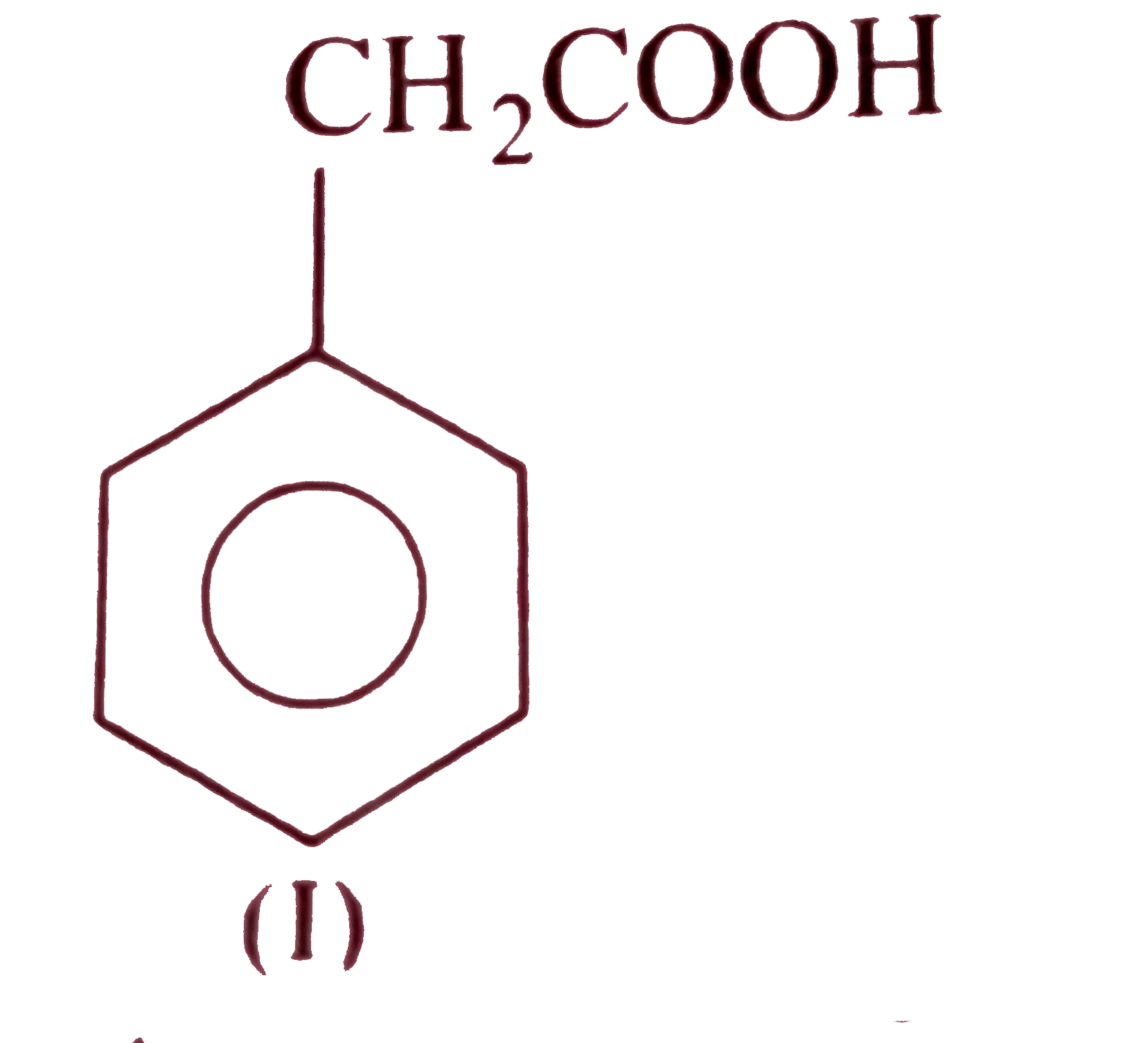



























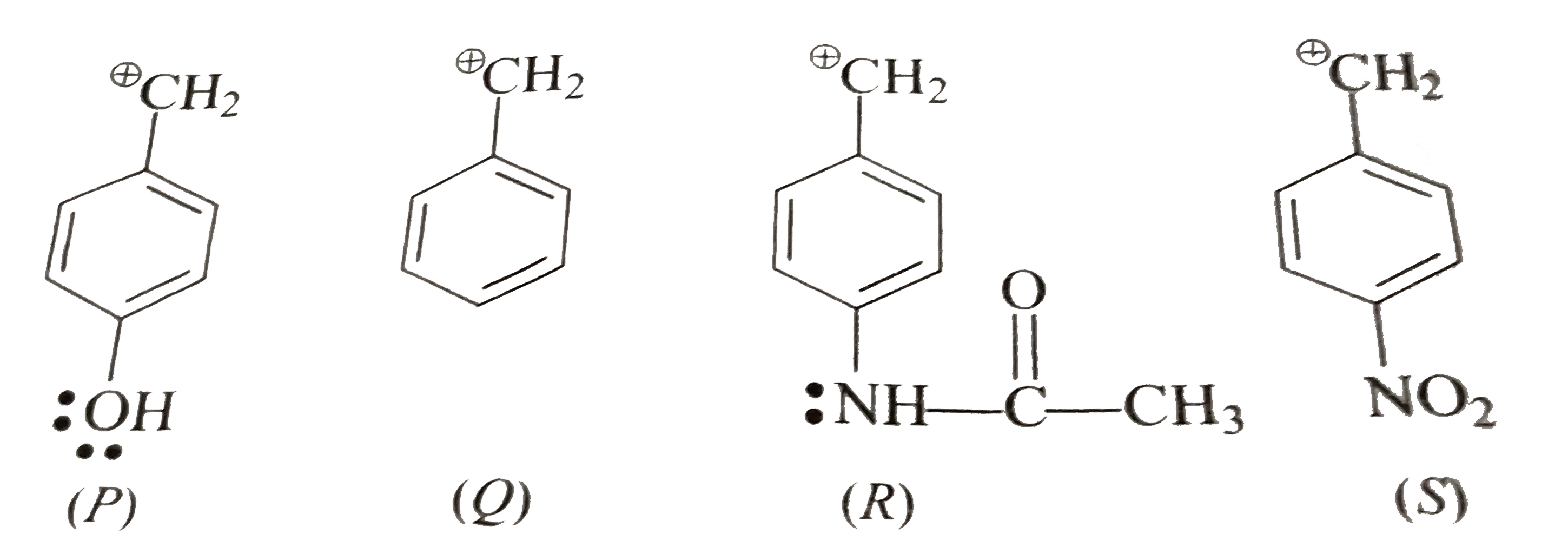


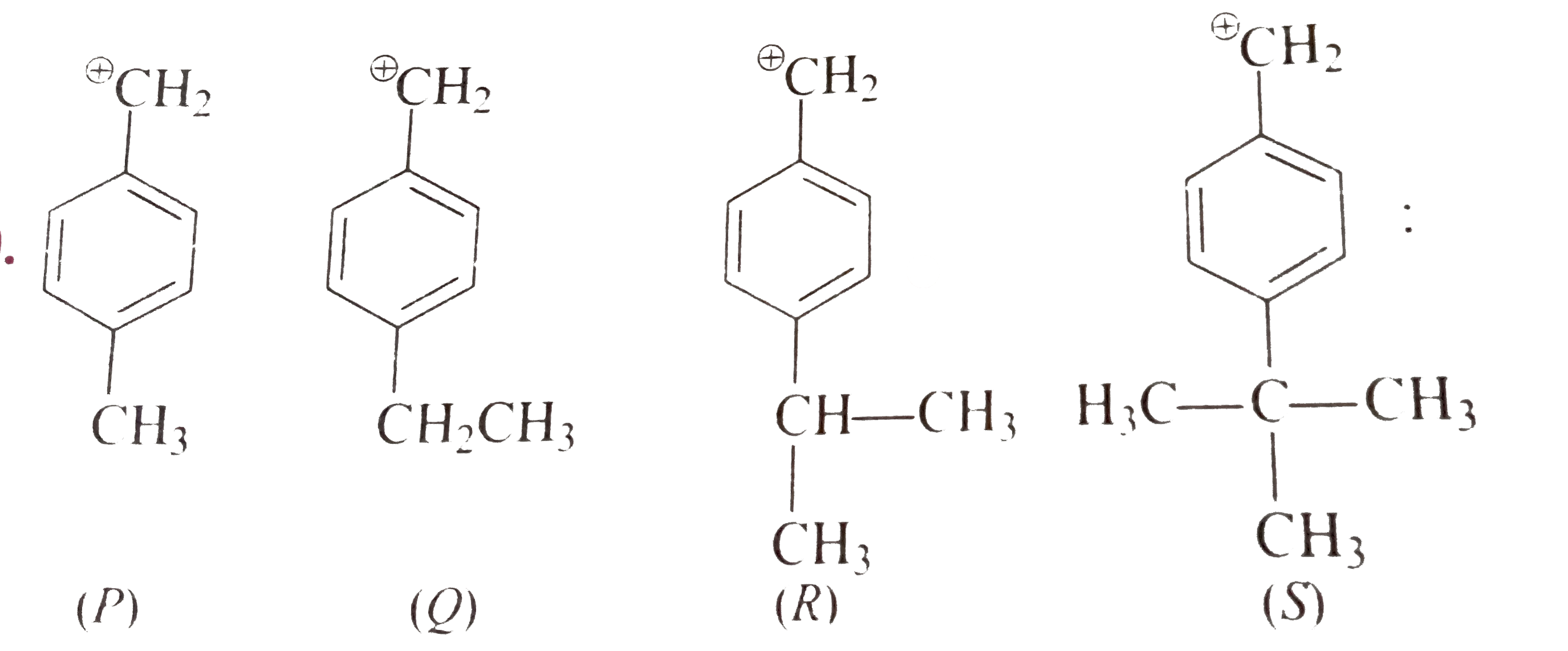















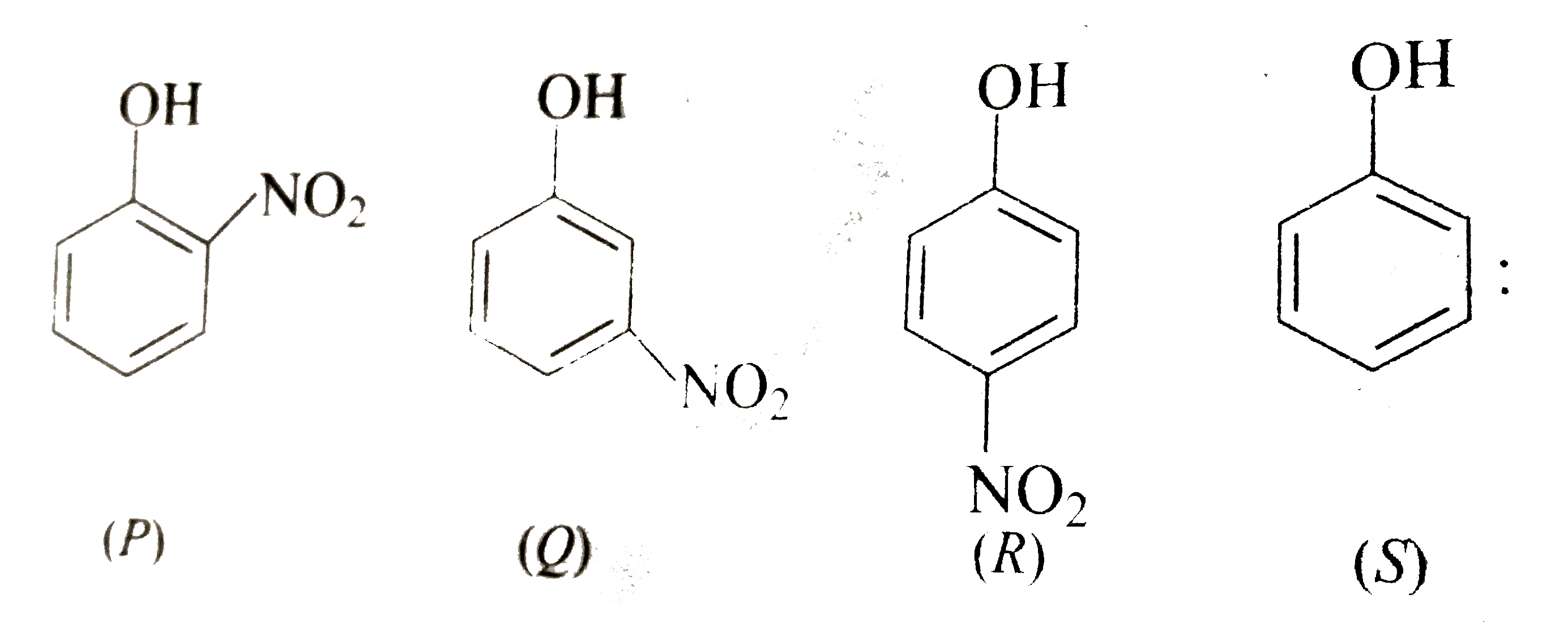



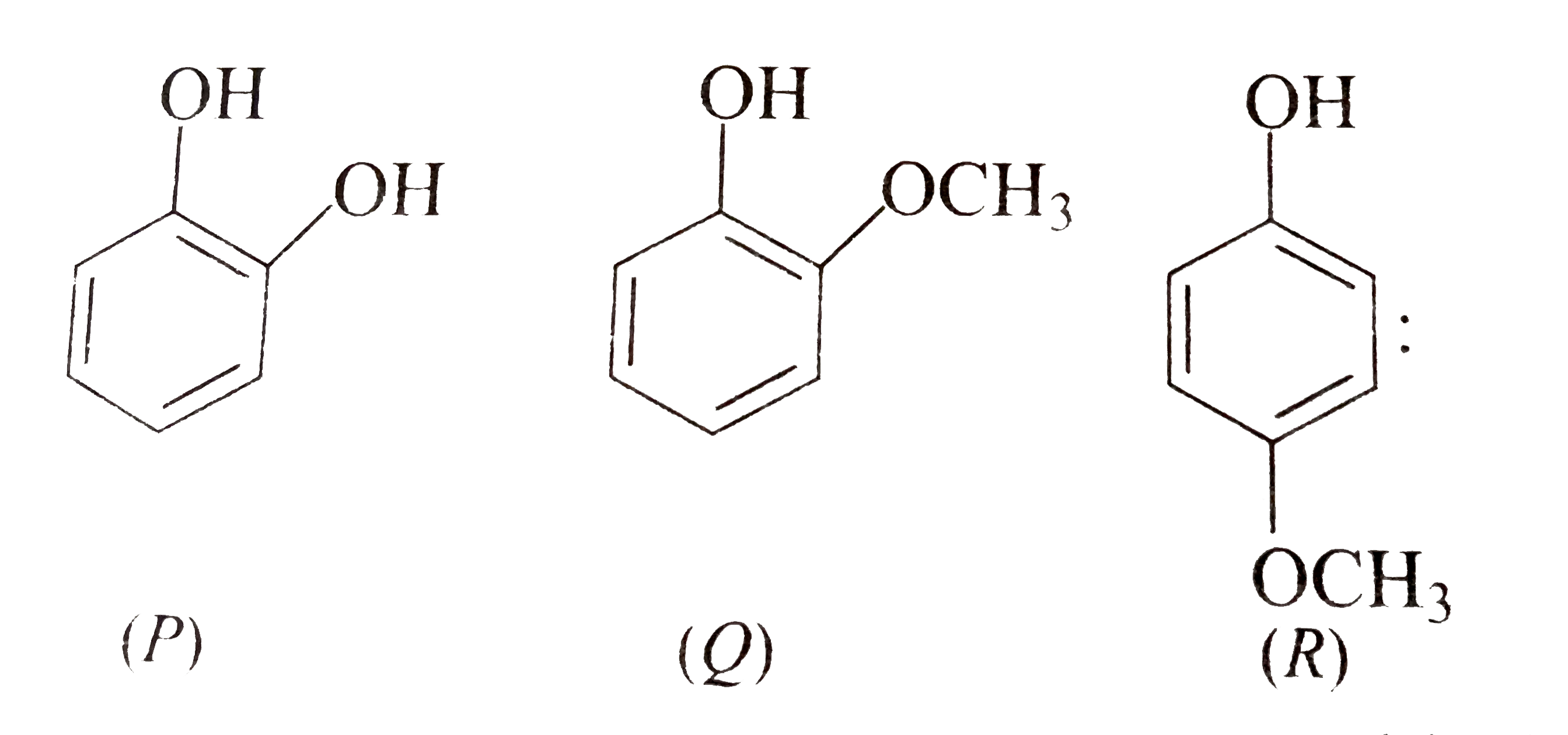 Arrange in the correct order of acidity
Arrange in the correct order of acidity











